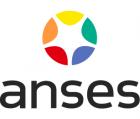
EURL
European Union Reference Laboratory for
rabies

In the context of the EU strategy aimed at improving animal health and establishing the single market for live animals and animal products, a network of European Union and National Reference Laboratories dealing with major animal diseases has been gradually set up. The designation of European Union Reference Laboratories should contribute to a high quality and uniformity of analytical results. EURLs for animal health and zootechnics are listed in Annex VIII of Regulation (EC) No 882/2004 on official controls, a regulation which was recently repealed and replaced by Regulation (EU) 2017/625 of the European Parliament and of the Council of 15 March 2017, starting 29 April 2018, in order to rationalize and simplify the overall legislative framework, and integrate the rules applicable to official controls in specific areas into a single legislative framework for official controls.
Functions and duties of the EURLs consist notably in providing information on analysis methods and organising comparative tests with the National Reference Laboratories, coordinating the application of the methods and research into new analysis methods, organising training and advanced courses for National Reference Laboratory staff and providing scientific and technical assistance to the Commission.
Apart from these duties and functions the Commission approves an annual or bi-annual working plan for each EURL specifying their tasks for the next year(s).
..
Within the framework of Council Decision 90/424/EEC on expenditure in the veterinary field of 26 June 1990, these laboratories may receive European Union financial aid for fulfilling the tasks and functions specified in the animal health legislation. For this reason, the work programmes for the EURLs concerned are approved every year via specific Decisions, based on Council Decision 90/425/EEC. Appropriations shall be decided upon each year as part of the budgetary procedure.
Commission Regulation (EC) No 1754/2006 of 28 November 2006 lays down detailed rules for the granting of European Union financial assistance to European Union Reference Laboratories for feed and food and the animal health sector pursuant to Article 28 of Decision 90/424/EEC. The said Regulation provides that the financial contribution from the European Union is to be granted if the approved work programmes are efficiently carried out and that the beneficiaries supply all the necessary information within certain time limits. In accordance with Article 2 of this Regulation, the relationship between the Commission and each European Union Reference Laboratory is laid down in a partnership agreement which is supported by a multi-annual work programme.
The European Commission has eradication and monitoring programmes for animal diseases (Regulation (EU) N° 652/2014). These national veterinary programmes aim at progressively eliminating animal diseases that are endemic to certain areas of the European Union. They also include checks aimed at preventing zoonoses. The programmes include a wide range of measures including vaccination, testing of animals, compensation for slaughtering or culling and treatment.
Rabies is part of the second group of diseases (“diseases with impact on human health and/or animal health and close to eradication, whenfeasible") covered by the EC programmes.
The Task Force was created in a meeting held on 15 March 2000 in Brussels in accordance with action 29 of the White Paper on Food Safety . The objectives of the Task Force are to improve animal disease eradication as well as improve the cost-benefit ratio of animal disease eradication programmes co-financed by the European Union. Meetings are chaired by the Commission and take place in Brussels each three to six months. For some diseases (sheep and goat brucellosis, bovine brucellosis, bovine tuberculosis, rabies, salmonellosis) subgroups of the Task Force have been established.
The subgroups support the Task Force and the Member States in their attempts to develop and to implement optimal disease eradication measures. The members of the subgroups are personally nominated.
For each meeting of the Subgroups a final report is produced. In those reports, a number of conclusions and recommendations are provided. The Task Force for rabies was created in 2004.
| Year | Date | Town | Country |
| 2017 | 2-4 October | Bucharest | Romania |
| 2015 | 15-16 October | Budapest | Hungary |
| 2012 | 11-12 December | Warsaw | Poland |
| 2012 | 29-30 November | Zagreb | Croatia |
| 2011 | 28 April | Kaliningrad | Russia |
| 2011 | 14-15 March | Plovdiv | Bulgaria |
| 2010 | 8-9 November | Tartu | Estonia |
| 2009 | 27-28 October | Vilnius | Lithuania |
| 2008 | 26-27 November | Riga | Latvia |
| 2007 | 11-12 May | Velky Meder | Slovak Republic |
| 2006 | 6-7 April | Poznan | Poland |
| 2005 | 26-27 April | Vilnius | Lithuania |
| 2004 | 21-22 September | Klagenfurt | Austria |
Source: https://ec.europa.eu/food/funding/animal-health/national-veterinary-programmes_en (Section "4. Useful information" / "Subgroup" / "Rabies subgroup")